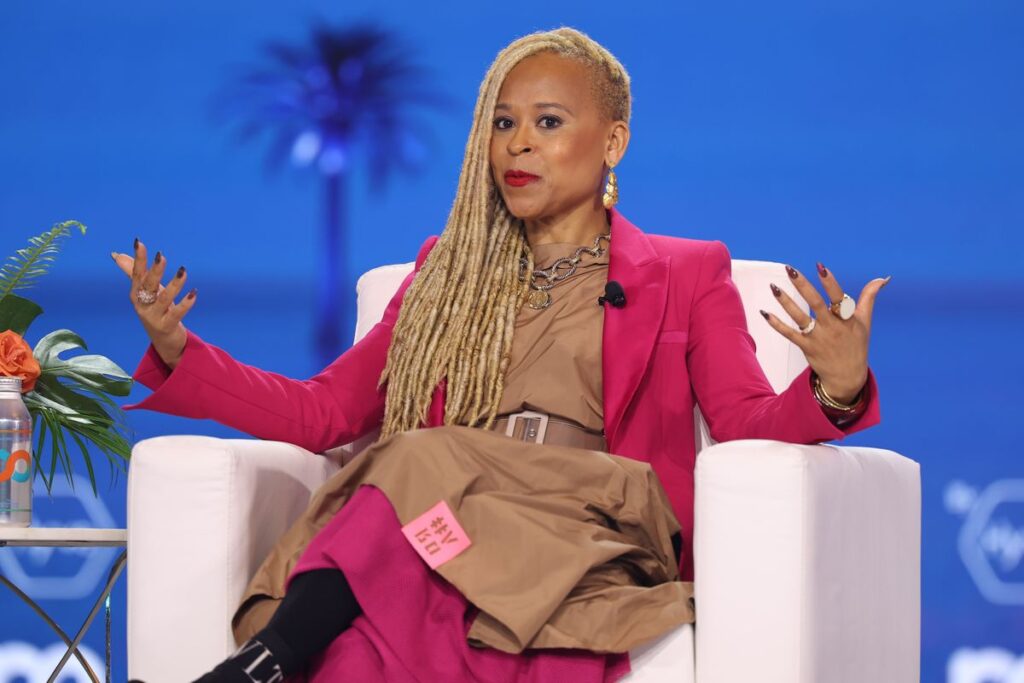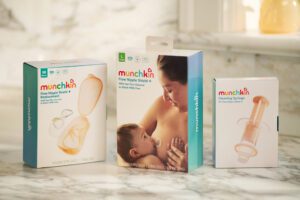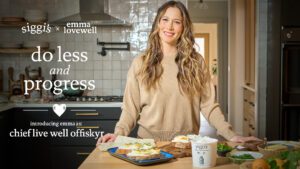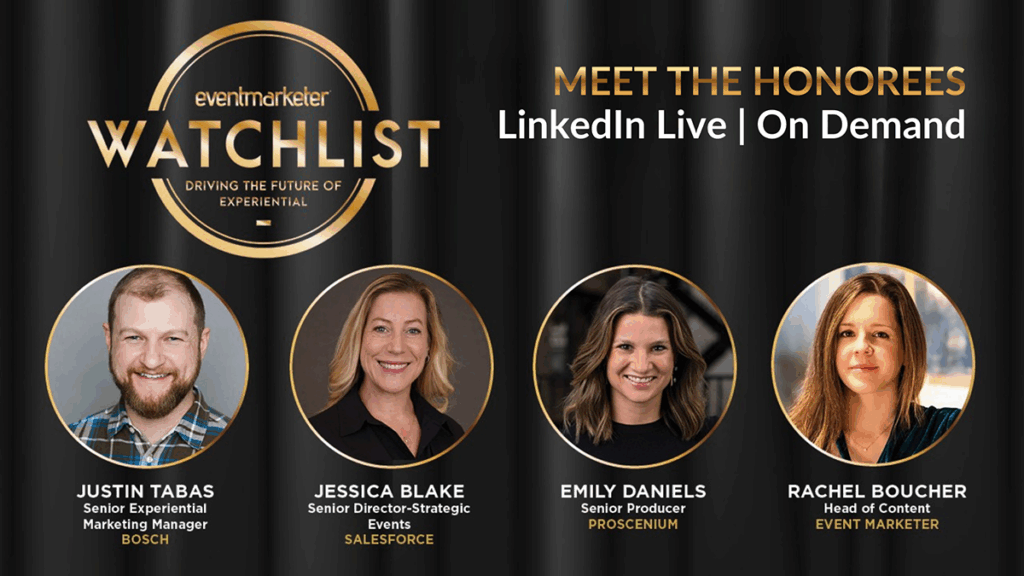The marketing funnel is dead, said Esi Eggleston Bracey, Unilever’s Chief Growth and Marketing Officer at the POSSIBLE conference in Miami in April.
The consumer package goods juggernaut counts more than 400 brands in its portfolio, generating 60 billion Euros in business annually from 3.5 billion global shoppers. And it does that by putting its brands in the center of cultural moments and amplifying them with authentic voices.
“Culture is how we build our brands today,” Eggleston Bracey said. “That’s our new marketing model. We build brands in culture. And then add-to-cart is how we earn a conversion.”
Integrating a Product Into Culture
Instead of creating a brand position and pushing it out to consumers, marketers need to find a natural fit for brands within the cultural moment—or create it itself, Eggleston Bracey said. And she gave two examples of how this plays out in practice.
Its cleaning brand Cif, which is popular in Brazil, is the cleaning solution of choice for the house in reality TV show “Big Brother Brazil.” “Through our partnership in culture with Big Brother, that brand has tripled in size over the course of two years because of the disgusting cleaning opportunities,” Eggleston Bracey said.
Another example of Unilever inserting a brand naturally into culture occurred when it created a cultural buzz for its Hellmann’s mayonnaise Super Bowl ad. The ad riffed off the iconic Katz Deli scene in the movie “When Harry Met Sally.” Unilever dubbed the ad “When Sally Met Hellmann’s” and enlisted actors Megan Ryan and Bill Crystal to recreate the scene—but made it about an irresistible sandwich with Hellman’s Mayonnaise.
“You use a cultural moment, you tie it to a unique piece of your brand, which is the irresistible pleasure of transforming a sandwich—and only Hellmann’s can do that through that sandwich market,” Eggleston Bracey said.
Before the ad’s Super Bowl debut, Unilever created buzz about it by posting a picture teasing Crystal and Ryan walking out of Katz Deli in New York City, Eggleston Bracey explained. “People started talking—is this going to be a reunion? What’s happening with Meg and Bill? People were building up conversations in culture. And then the big surprise—it was a Hellmann’s ad.”
Scaling and the Content Supply Chain
The other key to Unilever’s marketing success is what Eggleston Bracey calls the “many-to-many” model. After a brand determines its marketing idea and connects it to culture, it then uses influencers and user generated content to proliferate this message.
Brands should encourage consumers to share the content or their experience with the brand idea. This allows the content to become more personalized and speak to even more consumers within the theme.
“This content supply chain is really unlocking a higher volume, more variety of content, and content that has the potential to be viral through creators, communities and brands,” she said.
When picking creators, Eggleston Bracey advises brands to hire influencers who can speak in the brand’s voice and have an audience that is relevant for the brand.
Companies should also pick influencers that have a history of success, and the brand should be upfront about the content’s outcomes and expectations. “More importantly, we go and use creators who have the best chance of delivering those outcomes organically, based on what they demonstrated they’ve already done,” she said.
Complete the Loop with Add to Cart
Ultimately, all this marketing effort is to drive purchase. Brands need to insert their products into cultural moments, scale up content by tapping into influencers and communities, and then connect it to sales.
Eggleston Bracey ended her talk with citing the example of skincare product Dove and its campaign with Crumbl Cookies. Crumbl’s flavors change weekly and the brand has a large online following that hypes up the flavor drops. Dove tapped into this by coordinating its body wash scents with best-selling Crumbl flavors and did a “body wash drop” of these new scents.
After this step, it worked with its retailer wholesaler Walmart to ensure it had good shelf placement in store and online for this special drop. Then, to further drive awareness, it aired a real-time ad on a Netflix live sports show.
“You do it at scale through a Netflix ad, and then you drive it to cart and earn the conversion, really by working through retailers and partnerships to make sure you get into the basket,” said Eggleston Bracey. The results were “exceptional,” she said, with 100% sell-through. And Dove sales were up high single digits within the quarter compared with the year-ago period. “Getting culture to cart, culture to commerce, really works when you’re intentional about it.”
Featured image credit: POSSIBLE 2025 by Shutterstock








